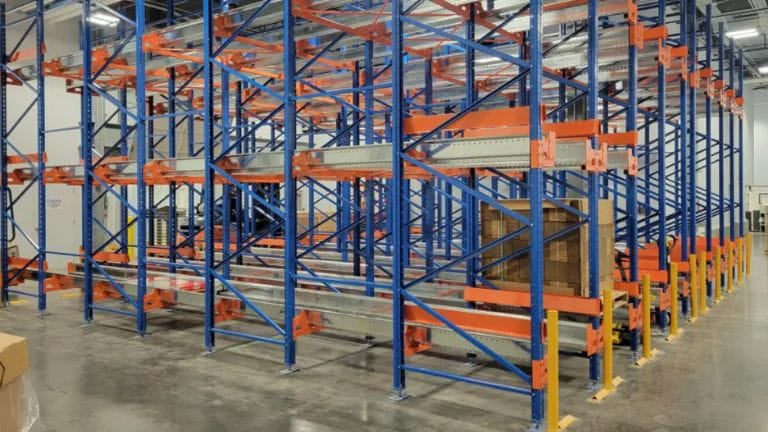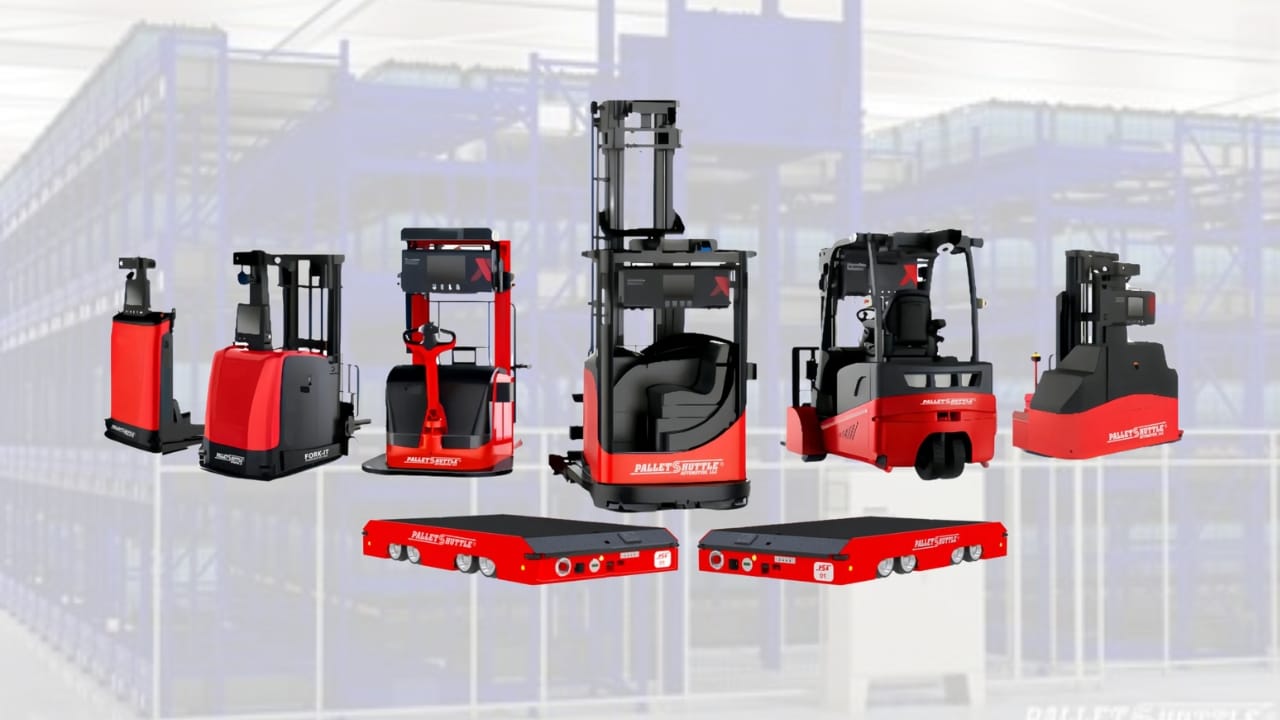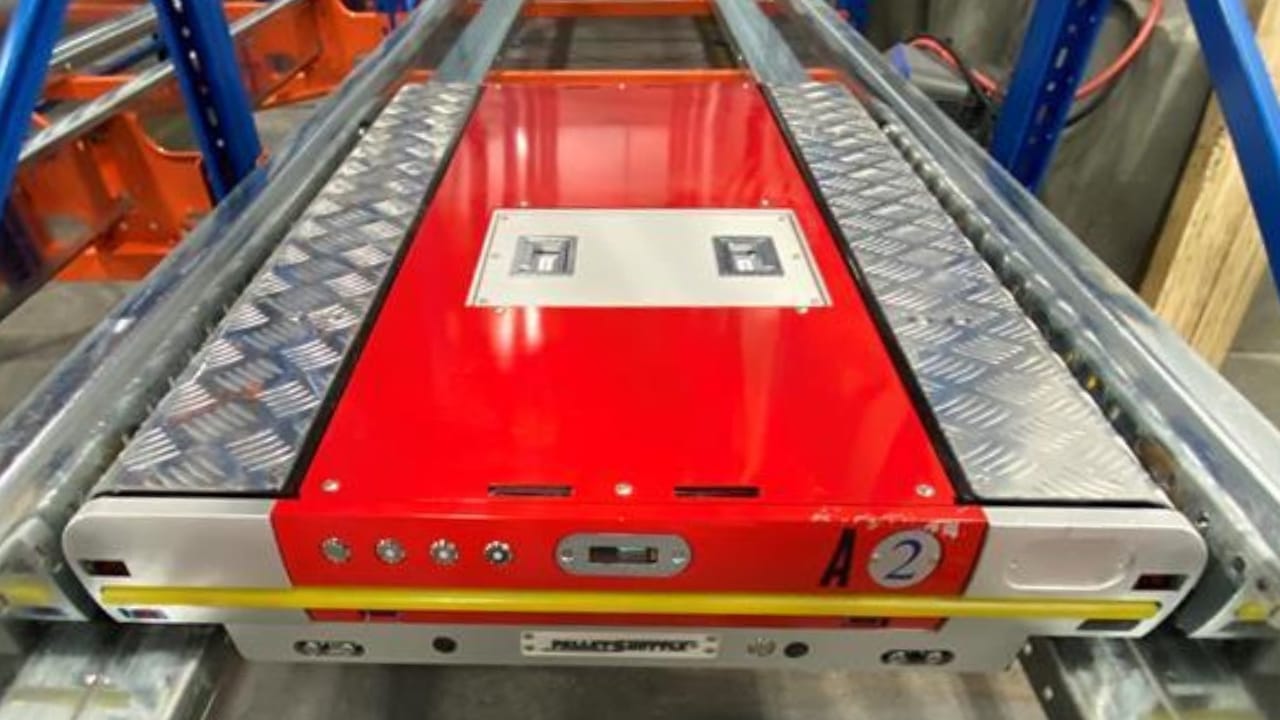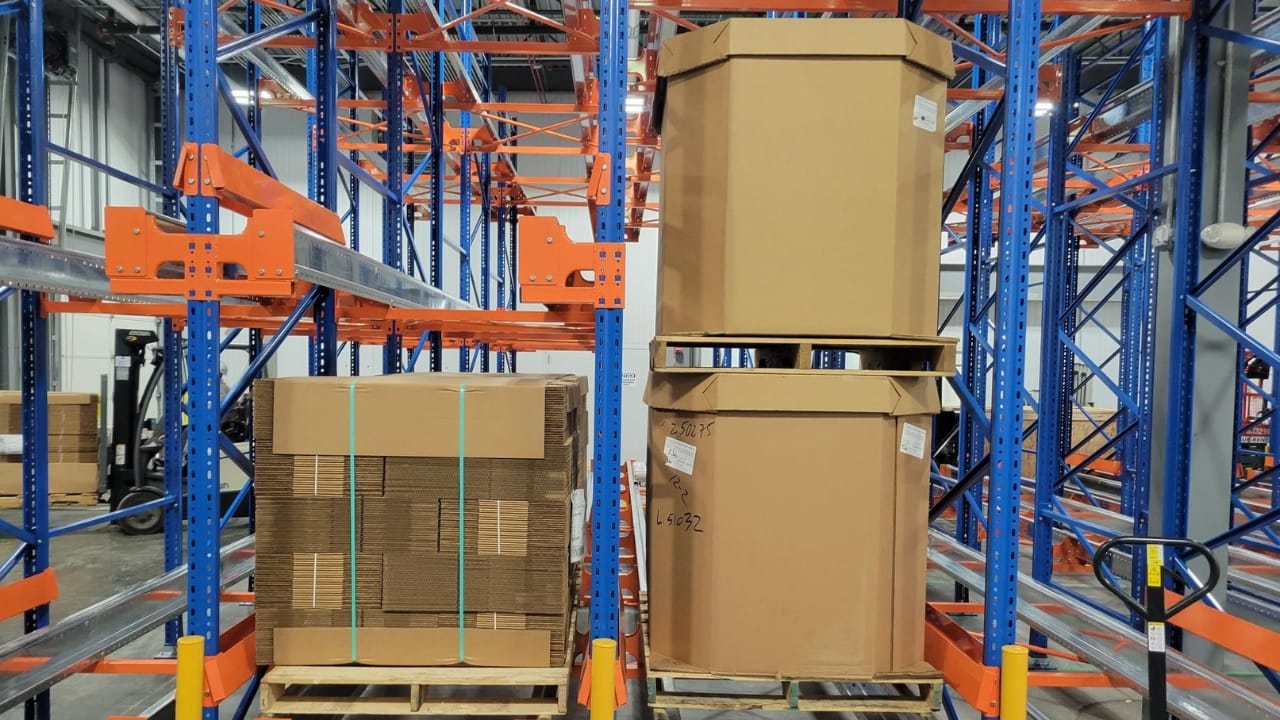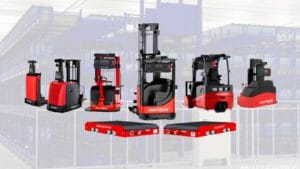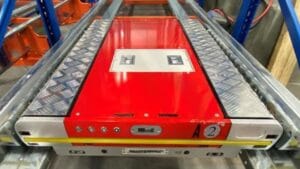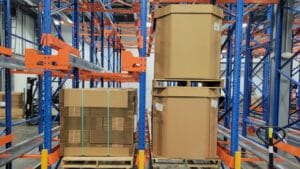When it comes to modern warehouse operations, efficient storage solutions are critical for optimizing space, reducing costs, and improving productivity. Among the many storage systems available, 2D Pallet Shuttle Systems and Drive-In Racking are two popular options. This blog will compare these systems, explore their unique features, and help you determine which is best suited for your needs.
Understanding the Pallet Shuttle System
The 2D Pallet Shuttle System is a semi-automated storage solution that uses a shuttle device to transport pallets within deep storage lanes. Designed for high-density storage, it eliminates the need for forklifts to enter the racking system, making inventory management more efficient and reducing forklift usage.
Key Features of the Pallet Shuttle System:
- Automation-Driven Process:
The shuttle operates via remote control, moving pallets in and out of racks with minimal manual intervention.
- Flexible Inventory Management:
Supports both FIFO (First-In, First-Out) and LIFO (Last-In, First-Out) storage methods, catering to varied product needs.
- Optimized Space Utilization:
Narrow aisles and deep storage lanes allow for efficient use of warehouse space.
- Faster Throughput:
Semi-automation reduces loading/unloading times compared to conventional systems.
- Improved Safety:
By eliminating the need for forklifts to enter storage lanes, the system reduces accidents and product damage.
Who Benefits Most from Pallet Shuttle Systems?
Pallet Shuttle Systems are ideal for warehouses with high SKU volumes, seasonal inventory spikes, or temperature-controlled storage needs where optimizing energy use and floor space is essential.
Exploring Drive-In Racking
Drive-In Racking is a traditional storage system that allows forklifts to drive directly into the rack structure to load and retrieve pallets. It is a high-density solution designed for warehouses storing large quantities of homogenous goods.
Key Features of Drive-In Racking:
- High Storage Density:
Uses fewer aisles and maximizes vertical space to accommodate more pallets.
- LIFO Storage:
This system operates best under the Last-In, First-Out principle, making it suitable for non-perishable goods.
- Simplicity:
No additional technology is required, making it straightforward to use with standard forklifts.
Who Benefits Most from Drive-In Racking?
This system works best for warehouses with uniform inventory, limited product turnover, and non-perishable goods requiring storage in bulk.
Comparative Analysis: Pallet Shuttle vs. Drive-In Racking
Criteria | Pallet Shuttle System | Drive-In Racking |
Efficiency | Faster loading/unloading with semi-automation | Slower, as forklifts must drive into lanes to load/unload pallets |
Space Utilization | Optimized with deep lanes and minimal aisle width | High-density, but utilizes more aisle space |
Operation Speed | Quicker throughput due to shuttle automation | Relies entirely on manual forklift operations |
Safety | Improves safety by eliminating forklifts from racking lanes | Increased risk of accidents due to forklift navigation |
Cost | Pallet Shuttle Automation provides comprehensive financing solutions that remove the burden of large upfront costs.. | Lower initial investment, suited for simpler operations |
Storage Method | FIFO and LIFO, offering operational flexibility | LIFO only, limits inventory management options |
Automation Integration | Has the ability to be combined with additional automation for modularity and flexibility. | Not compatible with automated systems |
|
|
|
Benefits of Choosing the Pallet Shuttle System
While both systems excel at high-density storage, the Pallet Shuttle System offers distinct advantages that make it a modernized solution for dynamic warehouse environments.
- Faster Throughput:
Semi-automated shuttles significantly reduce the time required to load and unload pallets, improving overall efficiency.
2. Improved Inventory Management:
With dual compatibility for FIFO and LIFO storage methods, it accommodates diverse inventory needs. Additionally, integration with Warehouse Management Systems (WMS) ensures real-time visibility into stock levels.
3. Reduced Operational Costs:
By automating repetitive tasks, the Pallet Shuttle System minimizes forklift usage, reducing labor costs and equipment wear and tear.
4. Enhanced Safety:
The reduced need for forklifts in storage lanes lowers the risks of operator accidents and product damage, creating a safer work environment.
5. Optimal Space Utilization:
Narrow aisles and vertical optimization enable maximum storage capacity, making it ideal for warehouses with limited space.
6. Future-Proof Design:
Designed to adapt to evolving business needs, the system scales easily with growing inventories and integrates with emerging automation technologies.
Making the Right Choice
Selecting the right storage system depends on the unique needs of your warehouse. For small-scale or budget-conscious operations with uniform products and simpler requirements, Drive-In Racking may suffice. However, for larger warehouses grappling with complex inventory needs, rapid turnover, and goals of long-term cost savings, the Pallet Shuttle System provides unmatched flexibility, efficiency, and safety.
Unlock Your Warehouse’s Potential with the Pallet Shuttle System
Investing in the right storage solution can transform your warehouse operations. The 2D Pallet Shuttle System, with its advanced automation and seamless integration capabilities, is a game-changer for warehouses aiming to increase productivity while reducing costs and safety risks.
Evaluate your specific goals, inventory types, and operational demands to make an informed decision. If you’re ready to explore how the Pallet Shuttle System can elevate your warehouse’s efficiency, our experts are here to help.
Contact us today for a personalized consultation and discover the difference automation can make.

